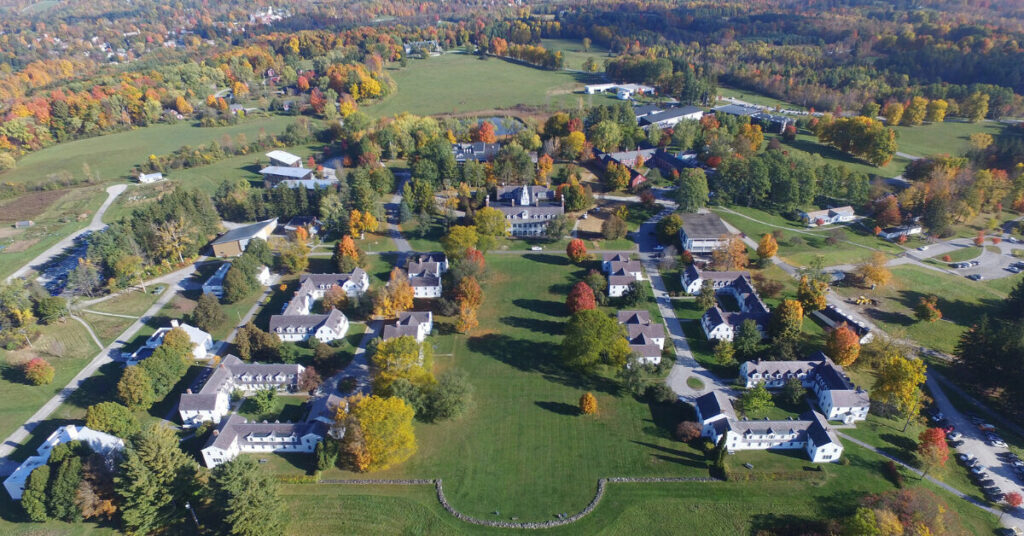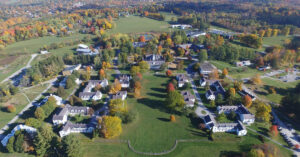
Since its inception, Bennington College has made a home for its students as well as its faculty and staff. The historic colonials have laid witness to a fair number of events, including the construction and installment of the 70s houses, the Woo houses, the Faculty Row houses, and the Orchard Houses. However, in a recent email sent out by the Bennington College Communications department, the College announced its plans to change this by converting housing currently occupied by faculty and staff into additional student housing. The email identified the apartments attached to Canfield, Stokes, Swan, Franklin, and Welling as well as Faculty Row 2 (Newcomb), Faculty Row 1 (Gray), and Faculty Row 4 (Moselsio); Orchard B, and C; Jennings Cottage as being the targets for this new housing plan.
One reason for this change was confirmed in the recent email sent out by the Bennington College Communications department in which the number of students who anticipated being eligible for a single included the class of 2025. However, when asked when seniors singles began as a promise made to prospective students, Li-Chen Chin, Dean of Student Life, and Tony Cabasco, VP for Enrollment, and Donnie Redd, Director of Residence Life responded to The Lens in a joint statement: “In regards to prospective students, our admissions team does field questions in relation to housing and conveys current practices. We are not aware of any official promise in writing.”
The response went on to state, “When prospective students tour campus or talk to current students, they naturally hear that seniors currently receive singles. This has been our practice, and we will make every effort to continue it, as we understand that it is an important part of Residential Life at Bennington.” However, given that the first part of this statement appears to contradict the email sent out by Communications, there is confusion as to why the college is upholding a promise it simultaneously claims never to have made.
Another reason for the increased demand of singles is due to the number of students who qualify and are granted ADA singles. In the Communications email, they confirm this statement by describing the current number to be 72, compared to 42 in 2019. However, an increase in demand for these accommodations can also point to a serious overcrowding issue. For example, when responding to the Lens, Li-Chen, Tony, and Donnie said in their statement: “Rooms are designated for single or double occupancy by Residential Life in collaboration with Buildings and Grounds, who together consider various aspects including the overall square footage and shape of the room, situational aspects of the house (ex: capacity limits based on shared bathrooms), and other safety and regulatory standards. While most spaces on campus may have assignments this fall, the changes described in our prior letter will ensure that all students are afforded an appropriate space that is consistent with higher education residential practices.”
The number of students who already meet ADA qualifications who would have otherwise been able to live with a roommate are more likely to apply for a single in order to escape the overcrowding issue. The increasing number of ADA accommodation requests and raising the demand for singles causes more doubles to be created out of a lack of space. “It’s a vicious cycle,” one student says.
In order to preempt the decision of faculty housing being reallocated, last year the Adaptive Framework Committee was formed with members of administration, faculty, and a select group of students who were paid for their time working towards the goal of generating housing solutions for the college’s increasing enrollment. One of these workers describes the Adaptive Framework Committee as having come up with a tiered solution, ranging from the most expensive and most effective to the least expensive and the most adaptive from what we already have built. In one proposal, the Orchard was converted into student housing and the faculty living there was moved to North Bennington. In a more long term proposal, it was suggested that the college chose not to renew its lease with the Paran Creek apartments, and after completing its agreement– reallocate that money into an investment in permanent housing on campus. This idea grew popular, since over the years, many issues have been cited with Paran Creek including the “skylight” apartments which have no windows– only a skylight in the ceiling, the long walk which can deter students from venturing out to campus at night, and the fact that students living in Paran don’t have to be on the meal plan creates an economic divide between students on and off campus. One student cites that a similar effect could start if students are assigned to the Orchard Houses, which are far away and distant from campus culture. Especially if these homes were designed with families in mind, not college students.
The Adaptive Framework Committee’s goal was to generate alternative housing solutions, however after the head of the committee’s departure at the end of last spring, its goals were turned over to members of administration who took the plans for housing in a different direction, namely the housing problem that the college is facing today. When asked; have any of the plans that were generated by the Adaptive Framework Committee been used or considered? Li Chen, Tony and Donnie responded: “The Adaptive Framework Plan (AFP) provided helpful and important thinking on a number of issues throughout our physical campus, but was designed as a slate or menu of options for the College to consider subject to available funding. The AFP continues to be used to inform our strategic plan and priorities for fundraising moving forward.”
Bennington’s teacher-practitioner model has long been a benefit of attending the school. According to the Bennington College website under ‘Faculty’, “Bennington’s teacher-practitioner model means that students work in close collaboration with faculty members who are themselves actively engaged in their fields.” However, as one faculty member points out: “A lot of us are practitioners and we practice various art forms, so we have to do that in New York or Boston. Living on campus makes the job possible.” One way the college currently supports this is through shared housing: Professors who teach at Bennington for a few days a week live in shared housing along with other faculty, and go home to their families on the weekends. In the email sent out by the Communications department, the college clarified Orchard D, E, and F would remain open for shared housing, but Orchard A would remain unassigned until the numbers for next year’s enrollment come in. It also noted Merck and Perkins’ pod apartments, which have historically been occupied by faculty and staff, are being reassigned to accommodate ‘professional staff,’ likely referring to members of administration (Student Life) or Campus Safety.
“This is the first time I’ve ever thought about leaving,” one anonymous faculty member said.
Practitioner professors need an accommodation in order to leave their homes and cities and come teach in Vermont, and without faculty and staff living on campus, the fabric of the Bennington education will not be the same.





Be First to Comment